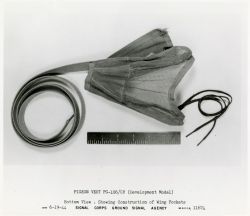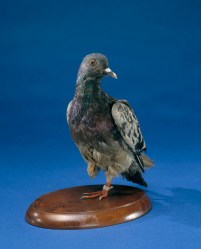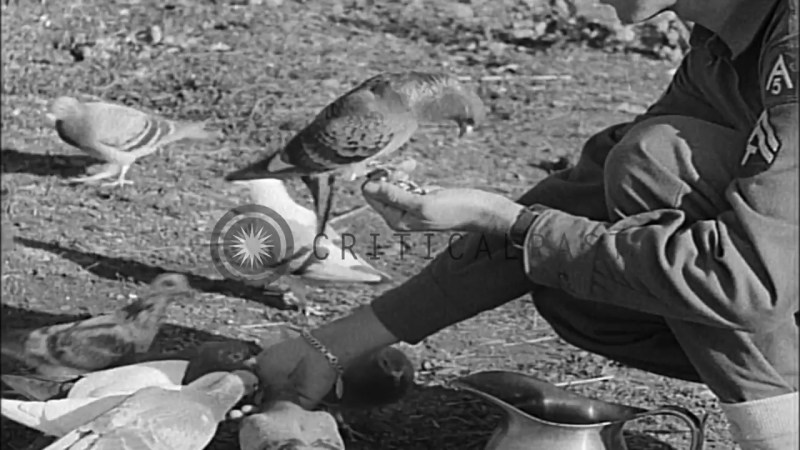Today, if you want to send a message to a distant location, you’ll probably send an e-mail or a text message. But it hasn’t always been that easy. Military commanders, in particular, have always needed ways to send messages and were early adopters of radio and, prior to that, schemes like semaphores, drums, horns, Aldis lamps, and even barrels of water to communicate over distances.
One of the most reliable ways to pass messages, even during the last world war, was by carrier pigeon. Since the U.S. Army Signal Corps handled anything that included messages, it makes sense that the War Department issued TM 11-410 about how to use and care for pigeons. Think of it as the network operations guide of 1945. The practice, though, is much older. There is evidence that the Persians used pigeons in the 6th century BC, and Julius Caesar’s army also used the system.
You wouldn’t imagine that drawing an assignment in the Signal Corps might involve learning about breeding pigeons, training them, and providing them with medical attention, but that’s what some Signal Corps personnel did. The Army started experimenting with pigeons in 1878, but the Navy was the main user of the birds until World War I, when the U.S. Pigeon Intelligence Service was formed. In World War II, they saw use in situations where radio silence was important, like the D-Day invasion.
The Navy also disbanded its earlier Pigeon Messenger Service. It then returned to avian communications during the World Wars, using them to allow aviators to send messages back to base without radio traffic. The Navy had its own version of the pigeon manual.
Why it Works
Pigeons instinctively return home and can do so over long distances. Apparently, part of this is tied up in hunger, but a large part is mating. Pigeons have a single mate, and when they are apart, they want to return to that mate. Kind of romantic.
The pigeons did require training. Ideally, you’d start with young birds and give them a steady source of water plus one day of generous feeding. It is also necessary to train the birds to return to their loft, a process called “trapping”, since having the bird just return to the general area isn’t helpful if you are trying to retrieve a message from its leg.
If the pigeons had headquarters duty, this was pretty straightforward. However, in combat, pigeons would be expected to reacclimate to a new location within eight days of arrival.
You can see a pigeon handler during World War II in the film below.
They were used even more in World War I, as you can see in the Pathé film from that war below.
Gear

There was a whole host of equipment, like the PG-50 cage and the PG-14 message holder. Our favorite, though, might be the PG-100/CB and PG-101/CB. These are little tubes full of pigeons that include a parachute, allowing pigeons to be delivered by air. Second place was the PG-106/CB pigeon vest.
Presumably, there were logistics deliveries for the birds, too — grit, medical supplies, and all the other things bird handlers needed. There’s a lot to running a bird army. The Army sold the last of its pigeons in 1957 since, by that time, radio was a perfectly fine alternative. Apparently, France and, possibly, China still maintain carrier pigeon contingents — or, at least, have in the last few years.
Of course, plenty of the Signal Corps did handle wired telephones and radios, too. A lot of hams wound up in the Corps and many other Signal Corps soldiers would become hams after the war.
All the forces on both sides used pigeons. In fact, Britain’s MI14 ran the Confidential Pigeon Service during World War II. Bombers would drop pigeons by parachute with tiny spy kits, including thin paper and special pencils, to allow civilians in occupied countries to send intelligence reports. The Germans eventually sent out their own birds, claiming they were British and wanting to know the names of resistance members. Of course, the birds would return to their German lofts.
A Famous Bird

Perhaps the most famed pigeon was the World War I winged warrior Cher Ami. In 1918, nearly 200 soldiers — the remnants of the infamous Lost Batallion — were trapped and were being accidentally shelled by their own artillery. The enemy quickly captured runners, and a number of carrier pigeons were also shot down. Cher Ami was dispatched to fly over enemy territory to request assistance and an end to the friendly fire. Although shot twice by enemy combatants, the bird’s message arrived, and the soldiers were saved.
Sadly, Cher Ami’s injuries were substantial, but the bird was a legitimate war hero. Army medics saved his life, but not one of his legs. General Pershing himself saw the bird off as it was put on a transport to return to the United States. While he made it to Fort Monmouth in New Jersey, he didn’t survive his wounds. He did receive the Croix de Guerre medal and was one of the first animals to receive the Animals in War and Peace Medal of Bravery. Cher Ami is displayed in the Smithsonian’s National Museum of American History.
Another famous bird was Kaiser. In World War I, he worked for the Germans until captured. Many World War II pigeons were his children. Kaiser is also part of the Smithsonian collection. Numerous decorated birds existed in both World Wars. Gustav and Paddy both received the Dickin Medal — sometimes called the animal’s Victoria Cross — for bringing the first reports of the Normandy landings to the British mainland. Another 30 pigeons would earn that same award. You can learn more about another bird’s World War II medal in the newsreel below.
It is worth noting that in Brussels, there is a monument to the wartime carrier pigeons known as the Monument au Pigeon-Soldat. We just hope the generals don’t go there for payback. England also pays homage to the feathered soldiers with a memorial at Beach House Park in Worthing.
Advanced Pigeon/IP
We’d be remiss not to mention the famous RFC1149 and RFC2549. These RFCs cover using IP over pigeon networks. You might note the date of issue of both of these RFCs. RFC2549 defines several service levels, including First, Business, and Coach.
Of course, you’d assume no one ever really sent packets like this. You’d be wrong. Then again, why use IP when you can just strap a memory card to the pigeon? Pigeons were also the earliest spy planes (the first link in that post is dead, but you can still find it). There was even talk of letting them fly missiles.

















Cooo…l
There is a problem at both sockets with dropped packets and their accumulation.
>> We just hope the generals don’t go there for payback.
Laugh of the day
” Pigeons have a single mate, and when they are apart, they want to return to that mate. Kind of romantic.”
No homing people. Seriously though how well would they do in different environments. e.g. cold, desert, etc?
Not all pigeons made it to destination. Many were shot down or captured, and this one just got lost for over half a century: https://abcnews.go.com/blogs/headlines/2012/11/wwii-carrier-pigeon-finally-delivers-secret-message
Thank you for this story.
I had a loving small parrot as part of my family for a really long time. Being a dog or cat person is normal-ish but being a bird person is “special.”
While I never recommend getting a pet that is a functional 2-year old forever there is something incredible about birds, enough that occasionally I question the definition of sentient, what emotions and consciousness really are, and so on. It’s definitely a stretch but in some capacity these birds maybe had an actual sense of duty (however defined). No match for a sportsman with a shotgun sadly.
Birds are really cool what I’m saying.
The size of a birds brain vs. their intelligence has always made me wonder if they have better brain organization than mammals.
“…even barrels of water to communicate over distances”
What’s the story behind this?
I was curious too. It seems the barrels were used as a timer (sort of like a sand timer). Both the sender and the receiver would have these barrels. When the sender wanted to send a transmission, they would get the receiver’s attention, then raise a torch. While the sender held the torch aloft, each person would let water out of the barrel through a hole. When the sender lowered the torch, each side stopped the flow of water from the barrel. Then the water level in the barrel could be decoded into a message (you’d decide what message each water level meant beforehand). Apparently it wasn’t very effective.